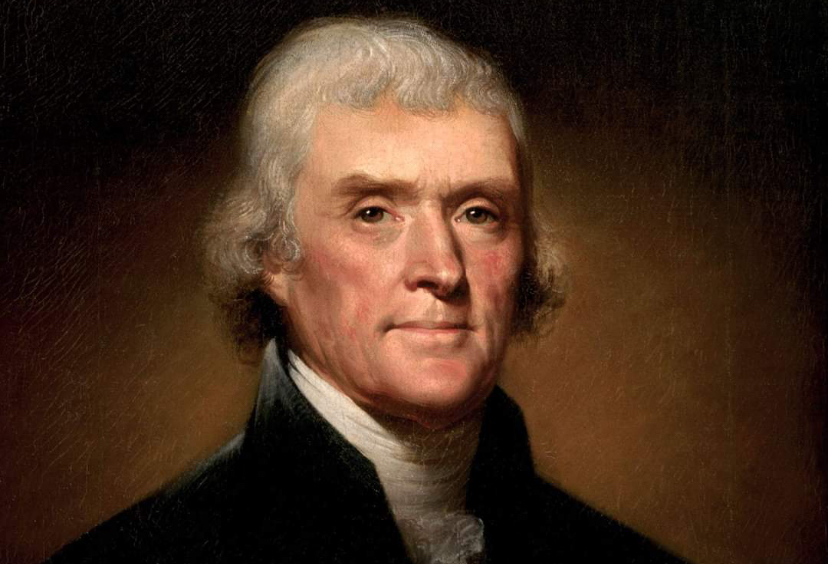A statue of Thomas Jefferson, a Founding Father of the United States, has been removed in New York, sparking discussions on historical figures.
A statue of Thomas Jefferson, one of the Founding Fathers of the United States, was recently taken down in New York, reigniting conversations about the representation of historical figures and their legacies. The removal has sparked debates over the complexities surrounding the portrayal of figures like Jefferson, whose contributions coexist with aspects of their lives that raise ethical questions.
Also read | Who was Kawsheen Gelzer? NYC woman arrested with body parts in freezer
Here are 10 fascinating facts that offer a glimpse into the life of this influential historical figure:
1. Author of the Declaration of Independence:
Thomas Jefferson is renowned for drafting the Declaration of Independence, a document that crystallized the ideals and principles upon which the United States was founded. His eloquent expression of liberty and equality resonates through the ages.
2. Architectural Innovator:
Jefferson’s architectural prowess is evident in Monticello, his plantation home in Virginia. He fused neoclassical design with innovative features, such as a dome and skylights, showcasing his commitment to both aesthetics and functionality.
3. Founder of the University of Virginia:
Jefferson’s dedication to education extended to founding the University of Virginia. He designed the campus and emphasized the importance of liberal arts education, leaving a lasting impact on American higher education.
4. Multilingual Scholar:
A polymath, Jefferson had a command of multiple languages, including Latin, Greek, French, Italian, and Spanish. His linguistic abilities enriched his understanding of classical literature and political thought.
5. Lewis and Clark Expedition:
As president, Jefferson commissioned the Lewis and Clark Expedition to explore the newly acquired Louisiana Territory. Meriwether Lewis and William Clark’s journey provided invaluable insights into the continent’s geography, flora, and fauna.
6. Horticulturist and Agriculturist:
Jefferson’s passion for farming extended to experimental gardening. He cultivated a variety of plants, introducing European crops to America and contributing significantly to agricultural knowledge.
7. Inventive Spirit:
Jefferson was an inventor, creating devices such as the polygraph—a copying machine—and an improved plow. His inquisitive mind and commitment to practical innovation left a mark beyond politics.
8. Founding Father and Slave Owner:
Despite advocating for individual freedoms, Jefferson’s legacy is complex due to his ownership of slaves. The contradiction between his principles and actions remains a subject of historical scrutiny.
9. Minister to France:
Jefferson served as the U.S. Minister to France from 1785 to 1789, witnessing firsthand the transformative effects of the French Revolution. His experiences abroad influenced his political philosophy.
10. Third President of the United States:
Jefferson was the third president, serving from 1801 to 1809. His presidency was marked by the Louisiana Purchase and the Lewis and Clark Expedition, contributing to westward expansion.
The statue’s removal in New York adds to a series of actions across the country aimed at reassessing public representations of historical figures. Advocates argue that it is essential to acknowledge the complexities in the lives of these figures, including their views on slavery, while critics contend that erasing such statues erases historical context.
Thomas Jefferson’s warning about the potential dominance of monied corporations and banks continues to resonate today. The quote, expressing concern about the influence of financial powers over the government, draws attention to ongoing debates around corporate power and its impact on democracy.
Public opinion remains divided, reflecting the broader national discourse on how to navigate historical symbols and representations. The removal of statues has prompted discussions on the criteria for honoring figures from the past and the need for a nuanced approach that recognizes both accomplishments and shortcomings
Also read | Why Klopp is top trending today?
As the nation grapples with questions of historical memory, the removal of Thomas Jefferson’s statue adds another layer to the ongoing dialogue about preserving, contextualizing, or removing monuments that shape public spaces. This development contributes to a larger conversation about the nation’s narrative and how it evolves over time, acknowledging the complexities of historical figures and their place in contemporary society.







